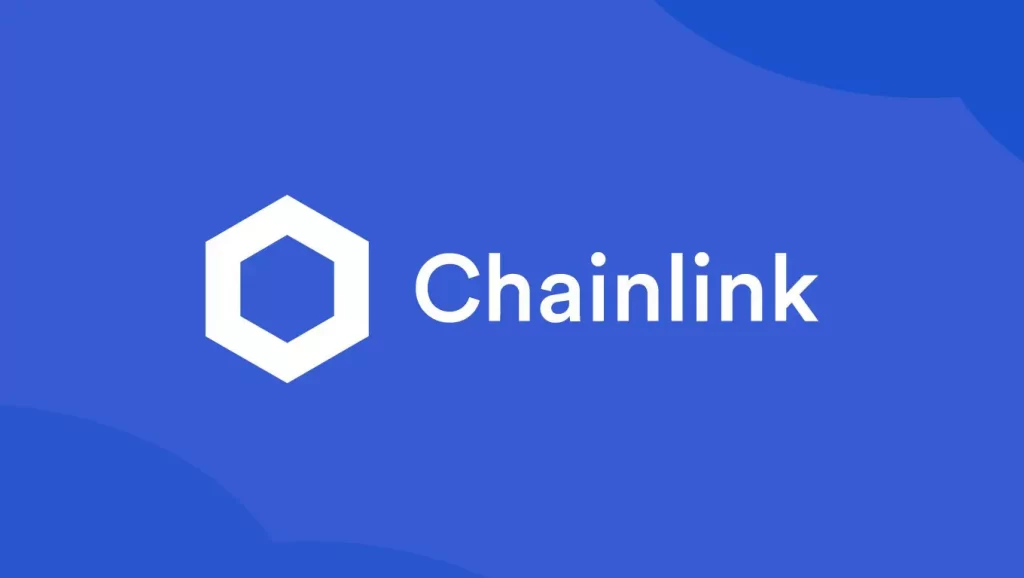Chainlink (LINK) is a decentralized network of oracles that plays a key role in the development of blockchain ecosystems by providing a link between smart contracts and external data.
Launched in 2017, Chainlink has become a leading solution to the so-called "oracle problem" in blockchains, allowing smart contracts to securely receive data from the real world and interact with external systems. In this review, we will take a closer look at what Chainlink is, how it works, its LINK token, main features, market impact, as well as the project's strengths and weaknesses.
What is Chainlink and how does it work?
Chainlink is a decentralized network of oracles that allows smart contracts on blockchains to access external data, such as asset prices, weather conditions, election results, financial data, etc., and interact with external systems, such as making payments through traditional payment networks.
Smart contracts, which are the basis of many blockchain applications, are inherently isolated from the outside world, which limits their ability to respond to real-world events. Chainlink solves this problem by acting as a bridge between blockchains and external data sources.
The main components of Chainlink:
- Oracles: These are services that query, verify, and pass external data to smart contracts. Oracles in Chainlink are decentralized, meaning that instead of a single centralized data source, a network of independent nodes is used, which increases reliability and security.
- Nodes: Independent node operators provide data to the network. They receive, process, and transmit information and are rewarded in LINK tokens.
- Data Aggregation: Chainlink uses multiple data sources to ensure accuracy. Data from different oracles is aggregated and the end result is transmitted to the smart contract as a single, verified data point.
- LINK token: It is a native token of the Chainlink network that is used to pay for oracle services as well as for staking, which ensures the honesty of node operators.
How Chainlink:
- Data request: A smart contract on a blockchain (e.g. Ethereum) makes a request for external data via Chainlink, creating an event (Requesting Contract).
- Choosing oracles: The Chainlink network generates a service level agreement (SLA) contract that defines which oracles will be responsible for the request. Three subcontracts are used:
Reputation Contract: Checks the reputation of oracles based on their history.
Order-Matching Contract: Selects the best oracles to fulfill the request.
Aggregating Contract: Collects and validates data from oracles, returning the final result.
Receiving and transmitting data: Selected oracles receive data from external sources (e.g., APIs, websites, financial platforms), process it through the Chainlink Core software, and transmit the result back to the blockchain.
Reward: Node operators are paid in LINK for the services they provide. If an oracle provides inaccurate data, it can lose part of its staking (deposit in LINK).
Chainlink operates on a decentralized basis, which eliminates the risk of a single point of failure inherent in centralized oracles. For example, Chainlink can provide the ETH/USD price for DeFi protocols using data from multiple sources, such as exchanges, and aggregates them to ensure accuracy.
History and creation of Chainlink
Chainlink was founded in 2017 by a team led by Sergey Nazarov and Steve Ellis.
The project was launched by SmartContract, and the first white paper was published in September 2017 together with Cornell University professor Ari Juels. In the same year, Chainlink conducted an ICO (Initial Coin Offering), raising $32 million, although this process caused some controversy due to the lack of transparency in the distribution of tokens.
2018
Chainlink has integrated Town Crier, a technology based on the Trusted Execution Environment that allows you to connect the Ethereum blockchain to web sources via HTTPS.
2019
The official launch of the main network on Ethereum, which was a key milestone for the project.
2020
Integration of DECO, a zero-knowledge proof protocol that allows you to confirm data without disclosing sensitive information (e.g., date of birth).
2021
Chainlink has published a white paper 2.0, expanding the project's vision to hybrid smart contracts that combine online code with offline computing.
2023-2025 years
Chainlink has expanded its integrations with various blockchains, including Avalanche, Polygon, BNB Chain, Arbitrum, and more.
In 2025, the project is cooperating with institutions such as Swift, Euroclear, and Fidelity International, as well as with DeFi projects such as Ripple (for RLUSD stablecoin).
LINK token: characteristics and economics
LINK is a native Chainlink network token based on the ERC-677 standard (an extension of ERC-20) on the Ethereum blockchain. The main functions of LINK:
- Payment for services: Smart contracts use LINK to pay node operators for providing data and computing.
- Staking: Node operators stake LINK as collateral to ensure their honesty. If a node provides inaccurate data, its bid can be "slashed" and the tokens redistributed to honest operators.
- Reputation: Operators with a higher staking have a higher chance of being selected to fulfill requests, which encourages long-term participation.
Tokenomics
General offer: The maximum supply of LINK is 1 billion tokens, all of which have been pre-minted (created in advance).
At the time of the ICO in 2017, only a fraction of the tokens were distributed, which drew criticism due to centralized control over the supply.
Circulation offer: As of the beginning of March 2025, the circulating supply is 638,099,970 LINK, which is about 64% of the total supply.
Price and market capitalization: At the beginning of March 2025, LINK's price is $17.68 and its market capitalization is $11,263,807,647.87. This is 66.64% below the all-time high of $52.99 reached on May 10, 2021.
Main functions of Chainlink
Chainlink provides a wide range of features that make it indispensable for blockchain applications:
Data from the real world (Data Feeds)
Chainlink provides smart contracts with reliable data, such as asset prices (e.g., ETH/USD), weather conditions, and financial indices. This is especially important for DeFi protocols that require accurate data for lending, trading, or settlement.
Random numbers (Verifiable Random Function, VRF)
Chainlink VRF generates verifiable random numbers, which is used in games, NFTs (e.g., loot boxes), and lotteries. This ensures fairness and protection against manipulation.
Cross-Chain Interoperability Protocol (CCIP)
CCIP allows data and tokens to be transferred between different blockchains, making Chainlink a key player in the inter-chain ecosystem.
Automation
Chainlink Automation allows you to automatically launch smart contracts under certain conditions, for example, to liquidate positions in DeFi.
Off-Chain Computation
Chainlink can perform computations off the blockchain, which reduces network load and lowers costs.
Using Chainlink in different industries
DeFi: Chainlink provides price feeds for credit platforms (Aave), decentralized exchanges (Uniswap), and stablecoins (Ripple's RLUSD).
Insurance: Automate payments based on data, such as weather conditions or flight delays.
Games and NFTs: Generating randomness for game mechanics and creating unique NFTs.
- Asset Tokenization**: Chainlink supports real-world asset (RWA) tokenization by partnering with financial institutions such as Swift and Fidelity International.
Supply chain management: Resource tracking and process automation in supply chains.
Chainlink's strengths
- Decentralization and security: Using a network of independent nodes eliminates the risk of a single point of failure. Chainlink has a reputation for providing a highly reliable service with a proven track record.
- Versatility: Chainlink is blockchain agnostic, meaning it works with any blockchain (Ethereum, Avalanche, Polygon, BNB Chain, etc.), supporting over 1600 projects as of 2025.
- Widespread acceptance: Chainlink cooperates with leading financial institutions (Swift, Euroclear, Fidelity International) and DeFi projects, which demonstrates confidence in the technology.
- Innovations: Ongoing development, such as the launch of CCIP for inter-chain collaboration and Smart Value Recapture (SVR) for DeFi, shows that the project is not standing still.
- A strong team: Founders Sergey Nazarov and Steve Ellis, as well as advisors such as Ari Ewels, have extensive experience in blockchain technology.
Weaknesses and challenges
- Centralized token management: All LINK tokens have been pre-minted and a large portion of them are held by a central issuer (Chainlink Labs). This raises questions about the decentralization of distribution.
- Dependence on Ethereum: While Chainlink supports many blockchains, the LINK token is based on Ethereum, making it vulnerable to high gas fees and network congestion.
- Competition: Other projects such as Band Protocol, API3, and Pyth Network also offer decentralized oracles, creating competition for Chainlink.
- The risk of node concentration: Despite its decentralization, Chainlink has been criticized for its reliance on a limited number of "trusted" nodes. Although LINK staking should solve this problem, the system is not yet fully implemented.
- LINK price volatility: Like many cryptocurrencies, LINK is prone to significant price fluctuations. For example, the price fell by 66.64% from the all-time high ($52.99 in 2021) to $17.68 in 2025.
Market impact and prospects
Chainlink holds a leading position in the oracle market with a market capitalization of $11.26 billion as of March 2025, making it one of the largest altcoins (9th in terms of social media activity).
Its technology has become the standard for DeFi, asset tokenization, and cross-chain interaction. Collaborations with institutions such as Swift and Fidelity International, as well as integration with projects such as World Liberty Financial (WLFI, linked to Donald Trump), are evidence of its growing influence.
Forecasts and the future
Short-term prospects: In 2025, Chainlink continues to integrate with financial institutions, which could push the price of LINK to $20-$25 if macroeconomic conditions are favorable.
Long-term prospects: Chainlink could become the standard for real-world asset (RWA) tokenization by 2030, analysts predict. Price forecasts range from $50 to $100 if the project maintains its leadership in the oracle industry.
Chainlink (LINK) is a key element of the blockchain ecosystem, solving the problem of smart contracts' access to external data and ensuring inter-chain interaction.
Due to its decentralization, versatility, and wide adoption, Chainlink has become the standard for DeFi, asset tokenization, gaming, and even traditional finance.
However, the project faces challenges such as competition, centralized token management, and dependence on Ethereum.
For investors, Chainlink remains an attractive asset due to its fundamental value and growing acceptance, but market volatility and macroeconomic factors should be taken into account.
For developers, Chainlink offers a powerful tool for creating complex smart contracts that can interact with the real world, making it an integral part of the future of Web3.


